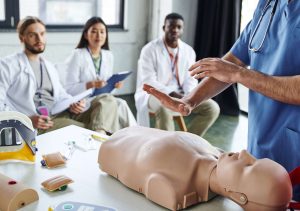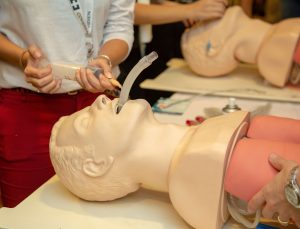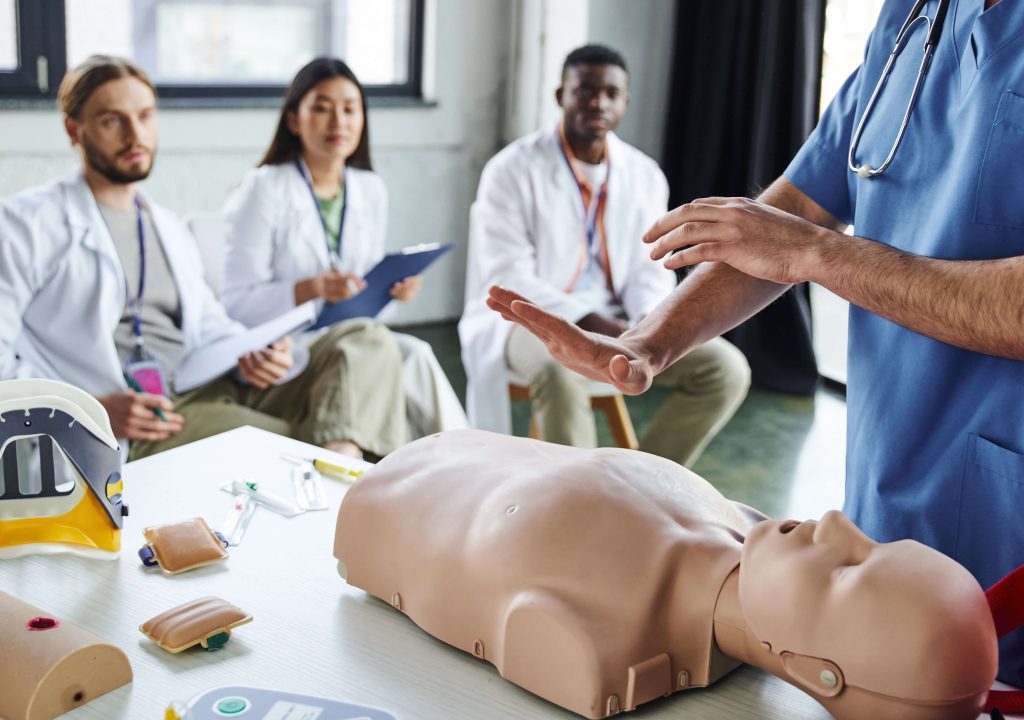Practicing CPR on a classroom manikin has always been essential for building confidence and life-saving skills. If you trained years ago, you probably remember simple torsos with stiff springs and very little feedback. Fast forward to today: the CPR dummy has transformed into a smart, realistic tool that prepares learners far better for emergencies.
In this article, we’ll look at five of the most important advances in manikins, why they matter for instructors and students, and how the right CPR supplies make training both safer and cost-effective.
1) Real-Time Feedback That Coaches Every Compression
Old-school dummies gave you a click if compressions were deep enough. That was helpful but left plenty of room for mistakes. Today, manikins can measure depth, rate, chest recoil, and ventilation quality in real time.
Why It Matters
- Compression depth and rate: Students see exactly when they’re within AHA-recommended ranges.
- Chest recoil: Sensors catch one of the most common errors—leaning too hard.
- Ventilation volume: Breath sensors show if learners deliver effective ventilations without overinflating.
Benefits for Instructors
- Saves class time by correcting errors immediately.
- Offers measurable data you can use for certification or reporting.
- Builds student confidence through instant feedback.
???? Want to see what’s available? Browse our rescue manikins with built-in feedback features.
2) More Lifelike Anatomy and Recoil for Realistic Practice
One of the biggest complaints about early CPR dummies was how unrealistic they felt. Advances in materials and chest recoil systems now make training much closer to the real thing.
Improvements You’ll Notice
- Anatomical landmarks: Raised sternum and rib outlines guide hand placement.
- Chest resistance: More natural pushback develops correct muscle memory.
- Audible or tactile “clicks”: Reinforce when compressions reach proper depth.
Airway & Breathing Features
- Tilting heads for airway opening.
- Obstructed airway simulations for advanced learners.
- Clear chest rise to confirm effective breaths.
Result: Learners aren’t just mimicking the motion—they’re practicing the feel of CPR, which sticks when stress levels are high.
3) Hygiene Upgrades That Keep Training Safer
Hygiene has always mattered, but the pandemic put it in the spotlight. Manufacturers now build CPR dummies with sanitization and student safety in mind.
Key Upgrades
- Replaceable lungs, faces, and valves: Each student can use their own set.
- Smooth wipe-clean surfaces: Quicker disinfecting between learners.
- Disposable face shields: Add an extra layer of protection during rescue-breath practice.
Quick Cleaning Routine
- Wipe down surfaces with an alcohol-based cleaner.
- Swap consumables between each student.
- Let the dummy dry fully before storage.
These upgrades not only reduce risk but also extend the life of your equipment. For guidance on why high-quality CPR training tools matter, see the AHA’s published science on CPR quality and feedback devices.
4) Modular, Durable Builds That Save Money
Budgets are tight, especially for schools and small training centers. Replacing full dummies every couple of years isn’t realistic. That’s why modular designs are a big improvement.
How Modular Saves You Money
- Swappable chest springs and pads: Restore recoil without replacing the torso.
- Replaceable airway parts: Just switch out lungs or valves between students.
- Durable shells: Withstand heavy transport and daily compressions.
Portability Benefits
- Lightweight designs mean one instructor can carry multiple units.
- Compact bags make traveling between classrooms and workplaces practical.
- Quick-connect systems make setup and teardown fast.
???? Pro tip: Standardize on one brand or model so all your consumables are interchangeable.
5) Smart Connectivity for Class Management
The most cutting-edge manikins now connect via Bluetooth or mobile apps. That lets instructors manage whole classes more efficiently.
What You Gain
- Dashboards: Monitor student performance live, spotting who needs coaching.
- Reports: Save or print summaries for compliance and record-keeping.
- Remote refreshers: Some models even support practice outside of class.
Who Benefits Most
- Corporate safety programs: Quick group assessments.
- Healthcare teams: Documented performance for audits.
- Schools: Easy-to-grade skills checks.
Don’t Forget the Essentials: CPR Supplies
Even the best dummy isn’t enough on its own. Reliable CPR supplies keep training safe, sanitary, and effective.
Must-Haves
- Disposable lungs and valves
- Face shields for both adult and infant training
- Cleaning wipes and sprays
- Gloves in multiple sizes
- AED trainer pads and batteries
Helpful Extras
- Pocket masks with one-way valves
- Replacement noses and faces
- Carry bags with compartments
- Bulk packs of consumables for large classes
Need help building your kit? Reach out through our Contact Us page for expert advice.
Choosing the Right Dummy for Your Program
Every instructor has different needs. The trick is to match the model to your audience:
- Schools and community groups: Sturdy torsos with quick-swap lungs.

- Healthcare providers: Higher-fidelity recoil and airway features.
- EMS and fire departments: Rugged manikins that withstand travel and heavy use.
Decision Checklist:
- Do you need real-time feedback?
- Will you teach ventilations or compressions-only?
- How many students per manikin?
- How portable does your setup need to be?
- What’s your consumables budget?
Caring for Your Manikins
A few extra minutes of care keeps your investment working for years.
After Each Class
- Clean all surfaces.
- Replace consumables.
- Restock your kit.
Monthly
- Inspect chest recoil and connectors.
- Replace worn or cracked parts.
- Test feedback systems and replace batteries.
Replacement signs:
- Uneven recoil or resistance.
- Loose or broken connectors.
- Faulty or drifting feedback readings.
When in Doubt, Ask a Specialist
Choosing the right manikins and supplies can feel overwhelming. A quick call can save you from overspending or buying gear you don’t need.
???? Next Step: Use our Contact Us form to tell us about your class size, learners, and budget. We’ll recommend the CPR dummies and supplies that fit your goals.
FAQs
What’s the most important feature in a CPR dummy?
Reliable chest recoil with depth and rate feedback. These directly affect learner performance.
How many manikins do I need per class?
Most instructors aim for a 2–3:1 student-to-dummy ratio to maximize practice time.
How often should consumables be replaced?
After every learner. This ensures hygiene and consistent performance.
Are smart manikins worth the cost?
For healthcare or large classes, yes. For smaller community groups, basic feedback features may be enough.
What’s the lifespan of a modern CPR dummy?
With proper cleaning and part replacement, 3–5 years or longer.

